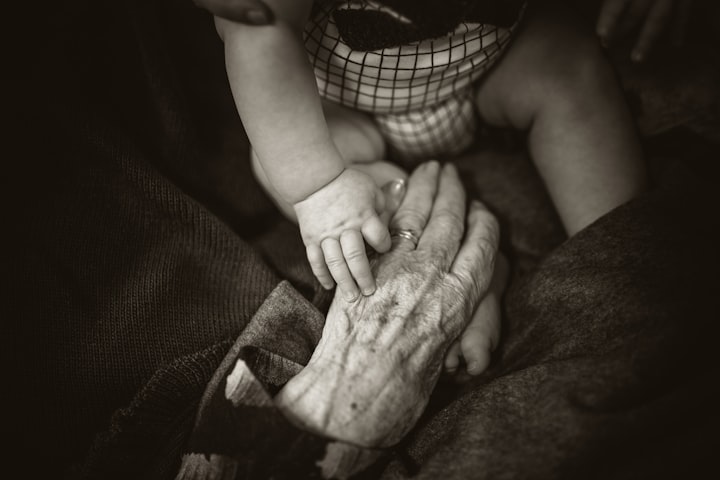The Journey of Child Development
From the moment of birth, children begin to embark on a path of physical, cognitive, emotional, and social development that shapes their identity and lays the foundation for their future.

Child development is a complex and fascinating journey, marked by significant milestones and stages of growth. From the moment of birth, children begin to embark on a path of physical, cognitive, emotional, and social development that shapes their identity and lays the foundation for their future.
At birth, infants are entirely dependent on their caregivers for survival. They rely on basic reflexes such as sucking and grasping to interact with the world around them. As they grow, infants quickly develop physically, gaining strength and coordination in their movements. By the end of their first year, most infants can sit up, crawl, and even take their first wobbly steps, marking a significant milestone in their physical development.
Cognitive development during infancy is equally remarkable. Babies are born with an innate curiosity and an eagerness to explore their surroundings. They begin to make sense of the world through their senses, learning to recognize familiar faces and objects. Through repeated interactions with their caregivers and the environment, infants develop basic cognitive skills such as memory, attention, and problem-solving. By the end of their first year, many babies demonstrate object permanence, understanding that objects continue to exist even when they are out of sight.
Emotionally, infants are highly responsive to the world around them. They communicate their needs through crying, smiling, and other nonverbal cues. As they form attachments to their caregivers, typically their parents, infants develop a sense of security and trust. This bond serves as the foundation for healthy emotional development, providing the emotional security necessary for exploration and learning.
Social development in infancy is closely tied to emotional development. Babies begin to engage in social interactions with their caregivers, responding to smiles, gestures, and vocalizations. Through these interactions, infants learn the basics of communication and social reciprocity. By the end of their first year, many babies begin to show an interest in playing with others, laying the groundwork for more complex social interactions in the future.
As children transition into early childhood, their development accelerates, marked by rapid physical, cognitive, emotional, and social growth. During this stage, children refine their motor skills, becoming more adept at running, jumping, climbing, and other physical activities. They also experience significant growth in their language skills, expanding their vocabulary and developing more complex sentence structures.
Cognitively, early childhood is characterized by dramatic leaps in thinking and reasoning abilities. Children begin to engage in symbolic play, using their imagination to create elaborate scenarios and stories. They also develop a greater understanding of cause and effect, allowing them to solve problems and make decisions more independently. By the age of five, many children demonstrate an understanding of basic mathematical concepts such as counting and simple addition.
Emotionally, early childhood is a time of exploration and self-discovery. Children begin to develop a sense of self-identity, forming opinions and preferences based on their experiences. They also learn to regulate their emotions more effectively, gaining a better understanding of how to express their feelings in socially appropriate ways.
Socially, early childhood is marked by an increasing interest in peer relationships. Children begin to interact with their peers more regularly, engaging in cooperative play and forming friendships. These interactions help children develop important social skills such as empathy, sharing, and conflict resolution. They also learn to navigate social hierarchies and develop a sense of belonging within their peer group.
As children enter middle childhood, their development continues at a steady pace, albeit with fewer dramatic changes than in early childhood. Physically, children experience continued growth and refinement of motor skills, with many engaging in organized sports and other physical activities. Cognitive development during middle childhood is characterized by increased attention span, memory capacity, and problem-solving abilities. Children also begin to develop a more sophisticated understanding of abstract concepts such as time, space, and cause and effect.
Emotionally, middle childhood is a time of continued self-discovery and emotional growth. Children become more aware of their own thoughts and feelings, as well as those of others. They also begin to develop a greater sense of empathy and compassion, recognizing the emotions of others and responding with kindness and understanding.
Socially, middle childhood is marked by an increasing focus on peer relationships and group dynamics. Children form close friendships and engage in more complex social interactions, such as group projects and team sports. They also become more aware of social norms and expectations, learning to navigate social situations with greater skill and confidence.
In adolescence, the final stage of child development, individuals undergo significant physical, cognitive, emotional, and social changes as they transition into adulthood. Physically, adolescents experience puberty, marked by rapid growth and the development of secondary sexual characteristics. Cognitive development during adolescence is characterized by the development of higher-order thinking skills, such as abstract reasoning, critical thinking, and long-term planning.
Emotionally, adolescence is a time of exploration and identity formation. Teenagers begin to question their beliefs and values, seeking to define themselves as individuals separate from their parents. They also experience intense emotions, ranging from excitement and joy to sadness and anxiety, as they navigate the challenges of adolescence.
Socially, adolescence is marked by a growing sense of independence and autonomy. Teenagers form close friendships and romantic relationships, seeking companionship and acceptance from their peers. They also begin to develop a clearer sense of their place in the world, exploring their interests and passions and setting goals for the future.
In conclusion, child development is a multifaceted and dynamic process that unfolds over the course of a lifetime. From infancy through adolescence, children undergo significant physical, cognitive, emotional, and social changes that shape who they are and who they will become. Understanding the stages of child development is essential for parents, caregivers, educators, and others who play a role in supporting and nurturing the growth and development of children.
About the Creator
Willow Peddy
I am a 24yr old, looking for something in life to bring a spark of excitement and bring back my artistic and imaginative flare :)
I have strange and crazy dreams and people always tell me to write them down so here goes my dream diary!






Comments
There are no comments for this story
Be the first to respond and start the conversation.